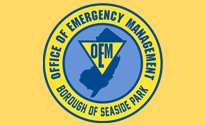Emergency Services
Seaside Park Volunteer Fire Department
| Location: Seaside Park Volunteer Fire Department Station 45 1 Municipal Plaza PO Box 201 Seaside Park, NJ 08752 |
Contact: |
For Emergencies Dial: 911
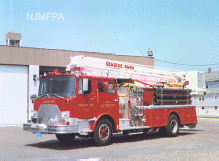
The Seaside Park Volunteer Fire Company Number 1 was founded in 1913. The firehouse was built on Fourth Avenue shortly after the founding of the Fire Company. An addition to the rear of the firehouse was originally used as horse stables. The first team of horses used by the fire company belonged to Chief Frank Hewitt, who operated the town’s express delivery service. In 1953, a new Town Hall was built for the municipal offices, police and fire departments at the former site of the railroad station.
Residents of the borough who volunteer their time as members of the Seaside Park Fire Company are notified of an emergency by a pager and by a siren. Please be alert for members responding to the fire house at Sixth Avenue; yield to personal vehicles with blue lights or hazard lights flashing.
As a volunteer organization, the company relies heavily on residents for support. To join the fire company, fire company auxiliary, for information on fire prevention, or to make a financial donation, please contact the fire company. The Seaside Park Volunteer Fire Company provides emergency services to Seaside Park and the South Seaside Park section of Berkeley Township.
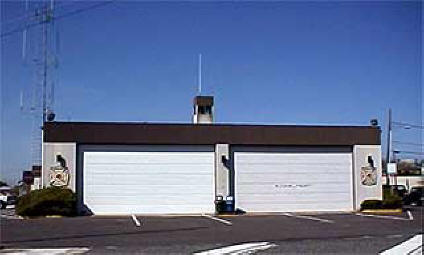
The Seaside Park Volunteer Fire Company No. 1 (district 9, station 45)
from Images of America: Seaside Park by Andrew J. Anderson ©1998
Propane Gas Grill and Range Safety Tips
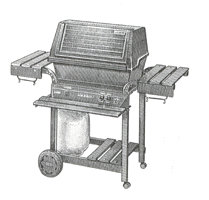
Propane Grill Do’s:
- Always use the grill outdoors in a well-ventilated area. Do not bring propane cylinders indoors or into an enclosed space such as a garage or basement.
- Always follow all of the manufacturer’s instructions and keep written materials and manuals in a safe, accessible place.
- Make sure the grill burner controls are turned off. Keep the cylinder valve closed when not in use.
- Make sure the gas grill is shut off and cooled off before covering your grill after use.
- Always use or store cylinders in an upright, vertical position. Store them outdoors away from sources of ignition.
- When you have your cylinder refilled, have your supplier check for dents, damage, rust or leaks.
- After filling, take your cylinder home immediately. Keep your vehicle ventilated with the cylinder valve closed and plugged or capped. Do not leave the cylinder in your car.
- When your grill is not in use, cover disconnected hose-end fittings and burner air intakes with small plastic bags, or obtain protective fitting caps from your propane supplier to keep out dirt, insects and moisture.
- Before lighting your propane gas grill burner, use a leak-detection solution to check all connections for tightness. Contact your local propane gas supplier to obtain the leak-detection solution and instructions on how to use it.
- Never use matches or lighters to check for leaks.
- If there is a significant and uncontrollable release of gas or a fire, call the fire department immediately and move all people and pets away from the unit.
Propane Grill Don’ts:
- Do not smoke while handling the propane cylinder.
- Do not leave the cylinder in your vehicle.
- Do not use matches or lighters to check for leaks.
- Do not allow children to tamper or play with the cylinder or grill.
- Do not use, store or transport your cylinder where it would be exposed to high temperatures. (This includes storing spare cylinders under or near the grill.)
Propane Gas Range Do’s:
- Follow the manufacturer’s installation and operating instructions.
- Have your unit serviced if the burner flame is not blue. The blue flame indicates complete combustion. A yellow flame means air inlets are clogged or burners need to be adjusted.
- Keep pot handles turned inward.
- Schedule regular preventive maintenance checks for your appliances.
- Keep the range surface clean.
Propane Gas Range Don’ts:
- Do not cover the oven bottom with foil – it can restrict air circulation.
- Never use gas ranges for space heating.
- Never allow children to turn the burner control knobs on your propane gas range.
- Do not leave food simmering unattended.
- Keep flammable materials away from burner flames.
- For more safety information, read the latest CPSC fact sheet on safe grilling. Also, the Hearth, Patio and Barbeque Association’s Web page on grill safety and trivia provides safety information about all types of grills.
- You can also download the latest grill safety booklet from the Propane Education & Research Council (PERC). (Adobe PDF)
- Users of small propane tanks can download this safety pamphlet from PERC. This booklet describes the care and maintenance of small propane tanks, especially those used for outdoor grills.
Smoke Detectors
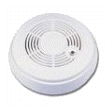
When fire occurs in your home, your chances for survival are two times better when smoke detectors are present than when they are not.
Smoke detectors, when properly installed and maintained (following the manufacturer’s directions), provide early warning when fires occur. Early warning increases your chances for survival and allows the fire department to save more of your property.
Time is crucial. Most fatal fires occur between midnight and 8 a.m. Many fire victims die in their sleep from breathing smoke and toxic fire gases. When your smoke detector sounds, you may have 2-1/2 minutes or less to escape. Develop and Practice a Home Escape Plan.
Fire Extinguishers
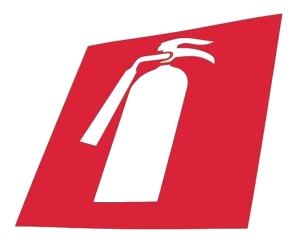
Even though extinguishers come in a number of shapes and sizes, they all operate in a similar manner. Here’s an easy acronym for fire extinguisher use:
| P.A.S.S. – Pull, Aim, Squeeze and Sweep |
| Pull the pin at the top of the extinguisher that keeps the handle from being accidentally pressed. |
| Aim the nozzle toward the base of the fire. |
| Squeeze the handle to discharge the extinguisher standing approximately 8 feet away from the fire and . If you release the handle, the discharge will stop. |
| Sweep the nozzle back and forth at the base of the fire. After the fire appears to be out, watch it carefully since it may re-ignite! |
Class A Extinguishers will put out fires in ordinary combustibles, such as wood and paper. The numerical rating for this class of fire extinguisher refers to the amount of water the fire extinguisher holds and the amount of fire it will extinguish.
Class B Extinguishers should be used on fires involving flammable liquids, such as grease, gasoline, oil, etc. The numerical rating for this class of fire extinguisher states the approximate number of square feet of a flammable liquid fire that a non-expert person can expect to extinguish.
Class C Extinguishers are suitable for use on electrically energized fires. This class of fire extinguishers does not have a numerical rating. The presence of the letter “C” indicates that the extinguishing agent is non-conductive.
Class D Extinguishers are designed for use on flammable metals and are often specific for the type of metal in question. There is no picture designator for Class D extinguishers. These extinguishers generally have no rating nor are they given a multi-purpose rating for use on other types of fires.
